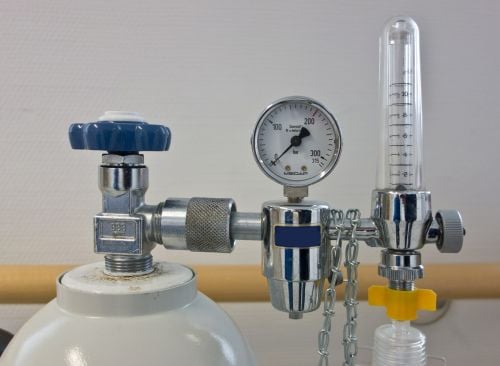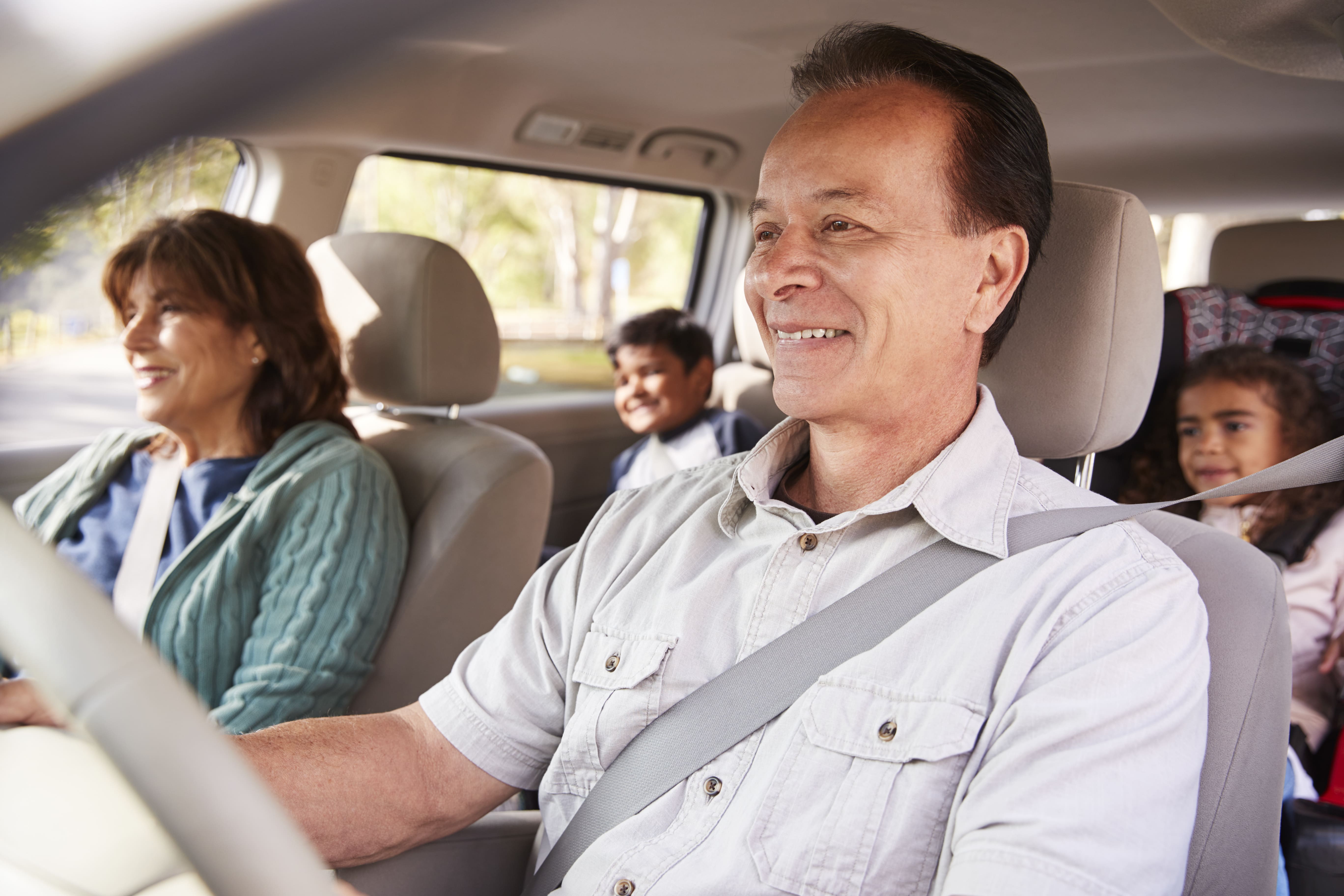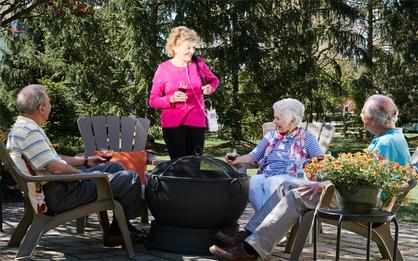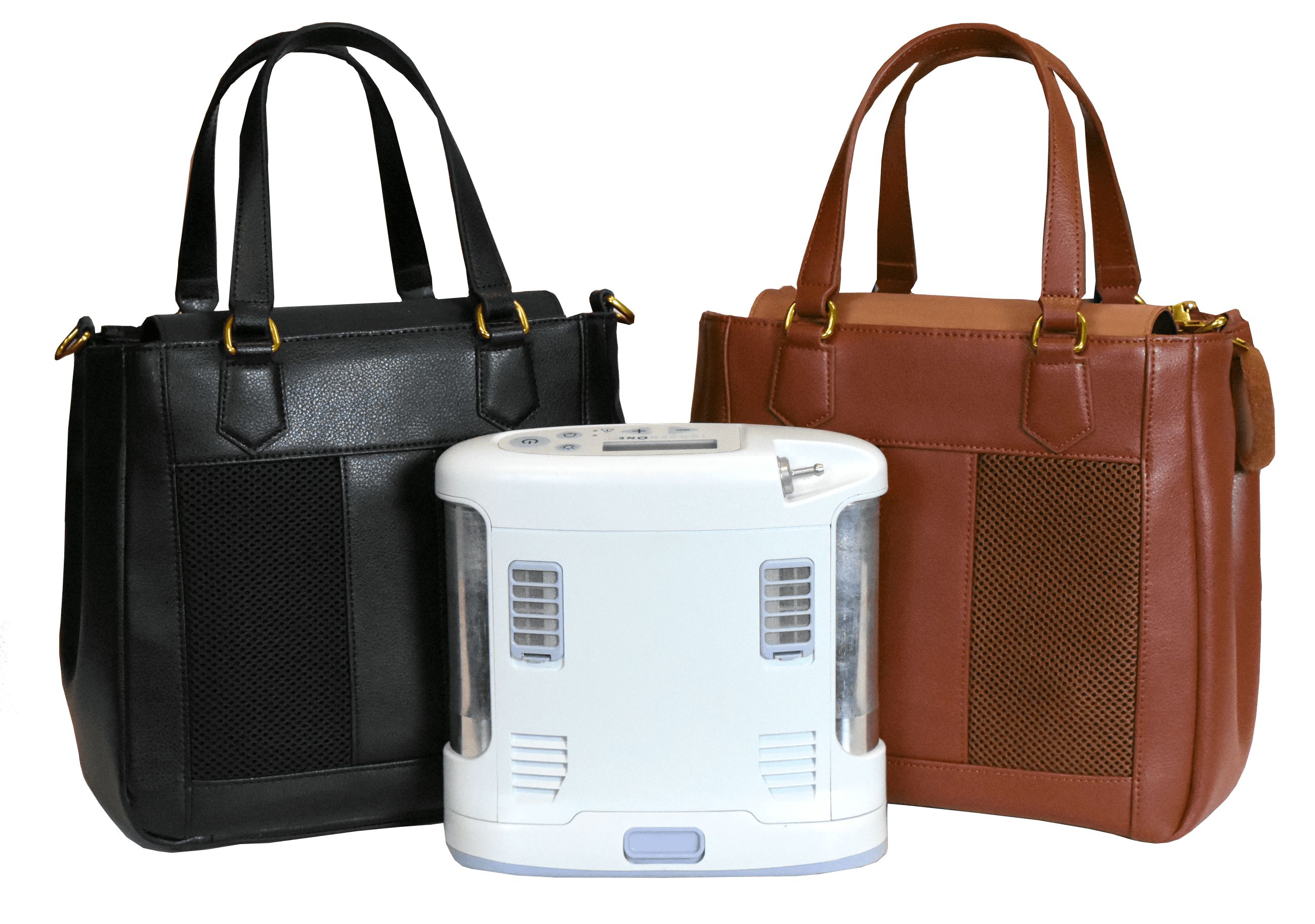-png.png)
Being diagnosed with a respiratory illness such as chronic obstructive pulmonary disease (COPD), cystic fibrosis, or pulmonary fibrosis can be life-changing. You’ll have to make adjustments to your daily routine in order to accommodate for doctors visits, pulmonary rehabilitation, supplemental oxygen therapy, and other lifestyle changes.
One hurdle many respiratory patients struggle to overcome after being diagnosed with COPD or similar conditions is maintaining relationships. Whether you like to visit a friend down the street or you have a long-time friend who lives overseas, a respiratory impairment of any kind can make these relationships difficult or impossible to maintain.
The good news, however, is that with enough time and patience, it is possible for respiratory patients to live a normal life. And the more you educate yourself about your condition and the tools at your disposal to help you succeed, the more equipped you will be to deal with problems when they arise.
Possibly the best way for COPD patients to overcome the setbacks of their illness is to invest in a portable oxygen concentrator. Unlike other oxygen delivery devices, portable oxygen concentrators enable patients to regain their freedom and independence while ensuring their oxygen needs are always met. Read on to learn 7 of the most important social benefits of owning a portable oxygen device.
{{cta('fa8abc2a-1e88-4fa3-82fd-1cb5b9ed43b2','justifycenter')}}
Greater Independence
Independence is something that’s easy to take for granted until it’s gone. Independence is what allows us to get out and do the things we want on our own terms rather than being bound to a person or thing. Unfortunately, many COPD patients lack the independence they need to maintain an active social life.
Traditional oxygen devices like compressed oxygen tanks make it very difficult for respiratory patients to maintain their independence. These tanks can often weigh in excess of 100 pounds and they need to be refilled every time they run out of oxygen. There are portable oxygen tanks available, but they typically only hold a couple of hours worth of oxygen.

Refilling an oxygen tank is a long and tedious process no matter how you do it. If you want a professional to refill your oxygen tanks, you’ll likely need to sign up for an oxygen delivery service which is not only expensive, but it can be very time consuming as well. If you opt to refill your own oxygen tanks, you’ll need to purchase an oxygen refill system. These are very bulky devices that will stay in your home and can take several hours just to refill a small oxygen cylinder.
Aside from being dependent on their oxygen tank, oxygen refill station, or an oxygen provider, many COPD patients are dependent on their friends and loved ones. From making it to monthly doctors appointments or pulmonary rehabilitation appointments, it can be impossible to keep up with all of these things on their own. There’s no understating the work that caretakers put into helping their patients, but the truth is, many COPD patients want to take care of themselves.

This is where portable oxygen concentrators come into play. Unlike with oxygen tanks, you can be entirely self-sufficient when using a portable oxygen concentrator. Since they are electronic devices, all you need is access to a wall outlet in order to charge the batteries. And once they’re charged, you can go wherever you please without having to worry about your oxygen supply.
Ultimately, POCs will give you the independence you need to handle your own life without depending on others. You can make it to doctors appointments, pulmonary rehab, and social gatherings without having to bring a loved one or caretaker along to help out.
Better Health
The goal of supplemental oxygen therapy is to reduce common symptoms associated with COPD. This includes symptoms such as breathlessness, chest pain, coughing, wheezing, and more. Studies have also shown that supplemental oxygen plays a key role in treating COPD exacerbations by preventing hypoxia (deficiency of oxygen in the tissues).
{{cta('43b79c5e-6bd6-4f02-ac27-2d038d20c146','justifycenter')}}
Whether you’ve been prescribed oxygen for several hours a day or your doctor wants you on oxygen 24/7, your health depends on your ability to receive the right amount of oxygen at the right time. And at the end of the day, portable oxygen concentrators offer much more flexibility when it comes to how your oxygen is administered.
.png)
Portable oxygen concentrators like the Inogen One G5, for example, provides patients with up to 1,260 ml/min of medical grade oxygen. The flow rate can easily be adjusted using the arrow buttons on the top of the unit, allowing you to fine-tune the amount of oxygen you receive. If for some reason a breath isn’t detected and no oxygen is put out of the device, you’ll hear an audible alarm notifying you.

When your health is in check and you’re doing everything you can to prevent COPD exacerbations, you’re likely going to have a much better social life. Whenever you go out with friends or family, you can rest assured that you’re receiving the oxygen you need to stay saturated. Of course, you’ll still want to take precautions such as avoiding polluted or smokey areas that could lead to exacerbations.
Long-Distance Travel is Possible
It’s hard to believe that just several decades ago, it was impossible for oxygen patients to travel long distances safely. Oxygen tanks have never been approved for in-flight use because they’re a fire hazard and they’re highly explosive. However, with the advent of portable oxygen concentrators, oxygen patients can travel freely on most major airlines as instructed by the Federal Aviation Administration (FAA).
.jpg)
The main reason POCs are safe on airplanes is that they contain pressurized oxygen like oxygen tanks do. They simply take ambient air, remove nitrogen, argon, and other impurities, then put out medical-grade oxygen via the nasal cannula. As aforementioned, it will only work when it detects a breath, so if you happen to drop the cannula, it won’t continue to put out oxygen.
Another form of long-distance travel you’ll have available to you are cruise ships. Taking a cruise is one of the best ways to explore an area of the world that you’ve never been to before and it’s also a great way to catch up with friends and family. While oxygen tanks are often permitted on cruise ships, this doesn’t necessarily mean you’ll have a way to refill it. And spending extra time with that means less time that you can spend with your loved ones.

On the other hand, all you’ll need with a POC is a fully charged battery and you’ll be able to stay out all day enjoying your time. Once you settle in for the night, you can charge up all of your batteries and have them ready to go in the morning. With the Inogen One G5, you can even invest in an external battery charger which will allow you to charge a battery separately from your POC.
If flying or taking a cruise isn’t your style, you might want to take a long road trip. Luckily, this is also a breeze when you have a portable oxygen concentrator. Most POCs either come with a DC charging cable or you can purchase one separately which will allow you to charge your device in your car using the cigarette outlet.

All-in-all, owning a portable oxygen concentrator is the best way for respiratory patients to stay connected with their friends and loved ones over long distances. Rather than fussing with an oxygen device that’s difficult to use and could put your health at serious risk, POCs just work, allowing you to spend quality time with your loved ones.
Improved Physical Endurance
Everyone has a friend or two who are constantly on the go. With healthy lungs, this might not be a problem, but if you have a respiratory illness, you may find it difficult to keep up with them. Aside from keeping your COPD symptoms in check, studies have also shown that supplemental oxygen can induce an enhanced physiologic training effect on the muscles which can improve your endurance and strength.

Another way portable oxygen concentrators help with physical activity is that they’re extremely lightweight and easy to carry. The Caire Freestyle Comfort, for example, weighs in at just 5 pounds and it’s still able to put out an outstanding 1,050 ml/min of medical-grade oxygen. Compare this to oxygen tanks or continuous flow portable oxygen concentrators which are too heavy to carry meaning you’ll have to wheel them behind you using a rolling cart.

Ultimately, owning a pulse flow portable oxygen concentrator means you’ll be able to keep up with those active friends in your life. Whether you just want to go for a daily walk in the park or you want to start a new exercise program, you’ll be able to do so without worrying about your ability to keep up.
Reduced Social Stigma
Social stigma is an unfortunate, but very harsh reality that people face on a daily basis. Essentially, a social stigma is a sort of generalized feeling about a certain person or thing. For example, people may see someone in a wheelchair and believe that they’re less capable than someone who can walk.

Similarly, someone who’s carrying or rolling an oxygen tank around with them may be seen as less capable than someone with a portable oxygen concentrator. One of the reasons for this is because most people don’t even know what portable oxygen concentrators are. They also look a lot more high-tech and advanced than oxygen tanks which affect the way people view them.
At the end of the day, we all know that oxygen patients are equally as capable as anyone else. However, owning a portable oxygen concentrator may prevent people from making generalized assumptions about you and your condition. It can also be a great conversation starter because people will be curious about what your POC does and how it works!
Improved Self-Confidence
One thing that’s more important than the way others feel about you is the way you feel about yourself. Confidence is key to maintaining any relationship and portable oxygen concentrators will inevitably make it easier to feel comfortable and confident being yourself.
.jpg)
When it comes to oxygen tanks, there’s very little in the way of customization or personalization. Most oxygen tanks are a drab silver and green color that’s not very appealing to the eye. This can lead to you feeling self-conscious about your oxygen tank, taking your mind off social interactions as a result.
-min.png)
Due to their size and bulkiness, oxygen tanks can also be embarrassing to maneuver in public. Whether you’re walking down a crowded sidewalk or you’re going up a flight of stairs, it’s difficult to be graceful with an oxygen tank.
Portable oxygen concentrators are the polar opposite of this. They’re light enough to carry on your shoulder and small enough to tuck under your arm without bumping into people. You also won’t have to dread taking public transportation or going up a flight of stairs with a portable oxygen concentrator.

When it comes to aesthetics, portable oxygen concentrators are much more stylish than oxygen tanks. While oxygen tanks are very oblong, portable oxygen concentrators are compact and sleek looking. You’ll also have access to more accessories like the Inogen One G5 Custom Carrying Case or the GO2 Carryall for the Inogen One G3 which completely conceals the concentrator.
They’re More Affordable for Long-Term Care
Potentially the most controversial topic surrounding supplemental oxygen is its cost. On one hand, patients need a device that can meet their needs consistently and reliably. On the other hand, they don’t want to break the bank doing it.
{{cta('b59df0c1-c4de-47a8-8e1c-0d33d4b414aa','justifycenter')}}
While at first glance, portable oxygen concentrators may seem like they’re the most expensive option, they’re actually far more affordable for long-term oxygen therapy. For example, if you spend $2,000 on an oxygen concentrator that lasts an average of 5 years, that’s just over a dollar a day. What’s more, most POCs come with a 3-year warranty at the very least meaning you’ll have an extra safety net if there happens to be a defect with your unit.

Ultimately, when you invest in a more cost-effective long-term solution for your oxygen needs, you’ll have more money to spend on other things such as a night out with your friends. Since financial struggles are among the top triggers of stress and anxiety, it’s best to always create a long-term financial plan rather than choosing the option that’s the most convenient at the time.
Conclusion
Being diagnosed with COPD or another chronic respiratory illness should not mean sacrificing time spent with friends and loved ones; if anything, the exact opposite is true. COPD patients should be spending more time on their relationships because they’re proven to reduce stress, boost life expectancy, and improve general well-being.
While there are many things you can do to maintain an active social life with COPD, investing in a portable oxygen concentrator is likely one of the most important. With a portable oxygen concentrator, you’ll have the freedom to go where you want, when you want. And you’ll feel significantly more confident and secure with a high-tech medical-oxygen delivery device at your side.
If you have any questions at all about portable oxygen devices for seniors, don’t hesitate to reach out to our respiratory specialists here at LPT Medical. Start by filling out the contact form at the side of the page and we’ll answer any question you may have.

